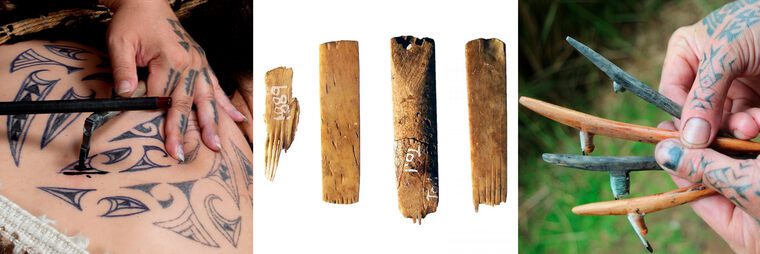
A Brief History of Tattoo Tools
Contents:
Tattooing is an art form with centuries of history, and over the years, significant changes have been made to the methods used in the process. Read on to find out how tattoo tools evolved from ancient bronze needles and bone chisels to modern tattoo machines as we know them.
ancient egyptian tattoo tools
Figure tattoos depicting animals and ancient gods have been found on Egyptian mummies dated to sometime between 3351-3017 BC. Geometric patterns in the form of webs were also applied to the skin as a protection against evil spirits and even death.
These designs were made from a carbon-based pigment, probably carbon black, that was injected into the dermis layer of the skin using a multi-needle tattoo tool. This meant that large areas could be covered more quickly, and rows of dots or lines could be obtained together.
Each needle point was made from a rectangular piece of bronze, folded inwards at one end and shaped. Several needles were then tied together, attached to a wooden handle, and dipped in soot to embed the design into the skin.
Ta Moco Instruments
Polynesian tattoos are famous for their beautiful designs and long history. In particular, Maori tattoos, also known as Ta Moko, are traditionally practiced by the indigenous people of New Zealand. These inscriptions were and remain highly sacred. With an emphasis on face tattooing, each design was used to represent belonging to a specific tribe, with a specific place to indicate rank and status.
Traditionally, a tattoo tool called ukhi, made from pointed bone with a wooden handle, was used to create unique infill patterns. However, before burning wood ink was etched, cuts were first made into the skin. The pigment was then driven into these furrows with a ¼-inch chisel-like tool.
Like many other traditions of the Polynesian island tribes, the ta-moko largely died out in the mid-19th century after colonization. However, it has since experienced a magnificent revival thanks to modern Maori who are passionate about preserving their tribal rites.
Dayak Tattoo Techniques
The Dayaks of Borneo are another tribe that have been practicing tattoos for hundreds of years. For their tattoos, the needle was made from orange tree thorns and the ink was made from a mixture of carbon black and sugar. Dayak tattoo designs are sacred and there are several reasons why someone from this tribe might get a tattoo: to celebrate a special occasion, puberty, the birth of a child, social status or interests, and more.
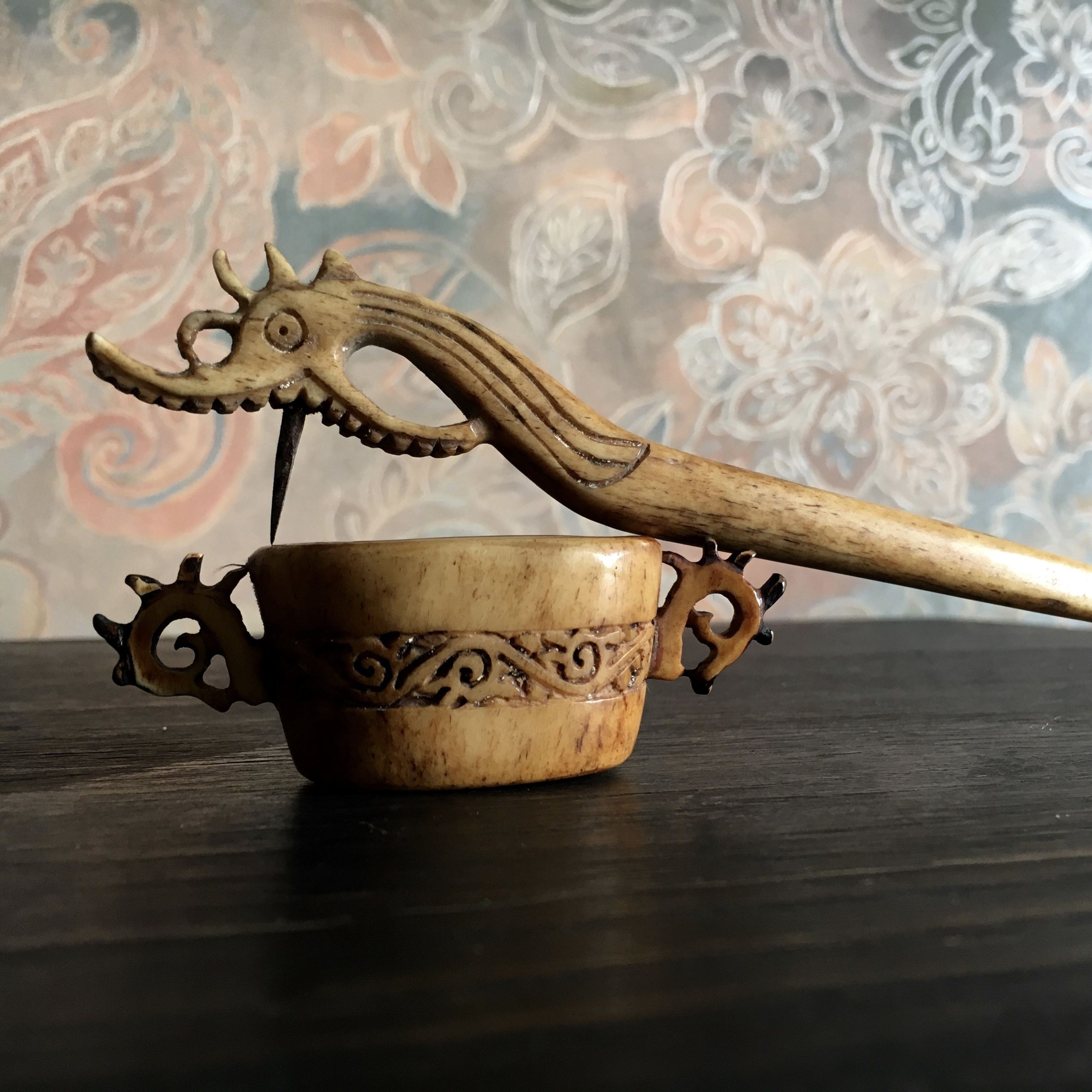
Dayak tattoo needle, holder and ink cup. #Dayak #borneo #tattootools #tattoospplies #tattohistory #tattooculture
haida tattoo tools
The Haida people who lived on an island off the west coast of Canada for about 12,500 years. While their tools are reminiscent of Japanese tebori tools, the method of application is different, as are the ceremonies when combined with a sacred tattoo session.
Via Lars Krutak: “The Haida tattoo seemed quite rare by 1885. It was traditionally performed in conjunction with a potlatch to complete the cedar plank dwelling and its front pillar. Potlatches entailed the distribution of personal property by the owner (the head of the house) to those who performed important functions in the actual construction of the house. Each gift raised the status of the head of the house and his family, and especially benefited the children of the owner of the house. After a long exchange of goods, each child of the leader of the house received a new Potlatch name and an expensive tattoo that gave them high status.
Long sticks with attached needles were used for application, and brown stones were used as ink. Anthropologist J. G. Swan, who witnessed a Haida tattoo ceremony around 1900, collected many of their tattoo tools and wrote detailed descriptions on the labels. On one of them is written: “Paint for stone for grinding brown coal for painting or for tattooing. For paint it is rubbed with salmon caviar, and for a tattoo it is rubbed with water.
Interestingly, the Haida people are one of the few tribes that used red pigments, as well as black, to create their tribal tattoos.
Early modern tattoo tools
Thai Sak Yant
This ancient Thai tattoo tradition dates back to the 16th century when Naresuan ruled and his soldiers sought spiritual protection before battle. It remains popular to this day, and even has an annual religious holiday dedicated to it.
Yant is a sacred geometric design that offers various blessings and protection through Buddhist psalms. In combination, "Sak Yant" means a magical tattoo. During the tattooing process, prayers are sung to infuse the tattoo with spiritual protective powers. It is believed that the closer the drawing is to the head, the more lucky you are.
Traditionally, Buddhist monks use long spikes made of pointed bamboo or metal as a tattoo tool. This was used to create tapestry-like Sak Yant tattoos. This type of hand tattoo requires both hands, one to guide the tool and the other to tap the end of the rod to inject the ink into the skin. Oil is also sometimes used to create a charm that is invisible to others.
Japanese tebori
The tebori tattoo technique dates back to the 17th century and has remained popular for centuries. In fact, until about 40 years ago, all tattoos in Japan were done by hand.
Tebori literally means "carve by hand" and the word comes from woodcraft; creating wood stamps for printing images on paper. Tattooing uses a tattoo tool consisting of a set of needles attached to a wooden or metal rod known as a nomi.
The artists operate the Nomi with one hand while manually injecting ink into the skin with a rhythmic tapping motion with the other hand. This is a much slower process than electric tattooing, but it can create richer results and smoother transitions between shades.
A Tokyo-based tebori artist known as Ryugen told CNN that it took him 7 years to hone his craft: “It takes more time to master the craft than (using a tattoo) on a car. I think this is because there are many parameters such as angle, speed, force, time and intervals between "poke".
edison pen
Perhaps best known for inventing the light bulb and the movie camera, Thomas Edison also invented the electric pen in 1875. Originally intended to make duplicates of the same document using a stencil and ink roller, the invention unfortunately never caught on.
The Edison pen was a hand tool with an electric motor mounted on top. This required an in-depth knowledge of the battery from the operator in order to maintain it, and typewriters were much more accessible to the average person.
However, despite its initial failure, Edison's motorized pen set the stage for a completely different type of tool: the first electric tattoo machine.
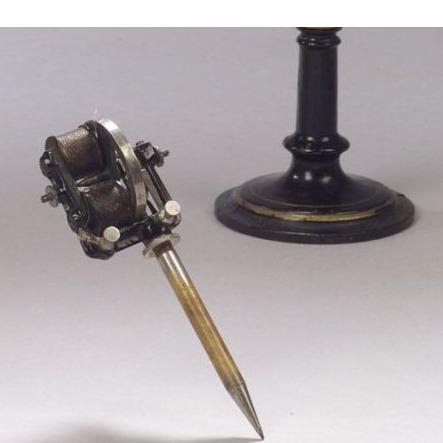
Edison electric pen
Electric tattoo machine O'Reilly
15 years after Edison developed his electric pen, Irish-American tattoo artist Samuel O'Reilly received a US patent for the world's first tattoo needle. After making a name for himself in the tattoo industry in the late 1880s, tattooing in New York City, O'Reilly began to experiment. Its purpose: a tool to speed up the process.
In 1891, inspired by the technology used in Edison's pen, O'Reilly added two needles, an ink reservoir, and re-angled the barrel. Thus, the first rotary tattoo machine was born.
Capable of performing 50 skin perforations per second, at least 47 more than the fastest and most skilled manual artist, the machine has revolutionized the tattoo industry and changed the direction of future tattoo tools.
Since then, artists from all over the world have begun to create their own machines. London's Tom Riley was the first to receive a British patent for his single-coil machine made from a modified doorbell assembly, just 20 days after O'Reilly received his.
Three years later, after several years of working with hand tools, Riley's rival Sutherland McDonald also patented his own electric tattoo machine. In an 1895 article in The Sketch, a reporter described Macdonald's machine as "a small instrument [which] makes a somewhat strange buzzing sound".
Modern tattoo tools
Fast forward to 1929: American tattoo artist Percy Waters developed the first modern tattoo machine in a familiar shape. After designing and manufacturing 14 frame styles, some of which are still in use today, it has become the world's leading supplier of tattoo tools.
It took another 50 years before anyone else patented a tattoo machine. In 1978, Canadian native Carol "Smoky" Nightingale developed a sophisticated "electrical marking device for tattooing people" with all sorts of customizable elements.
Its design included adjustable coils, leaf springs, and movable contact screws to change depth, challenging the idea that electric tattoo machines should have fixed components.
Although the machine was never mass-produced due to production difficulties, it demonstrated what was possible and set the stage for the variable electromagnetic machines that are used in tattooing today.
Considering how the occasional successes of Edison and Nightingale helped shape today's booming tattoo industry as we know it, we dare say that every once in a while, small setbacks can learn something...
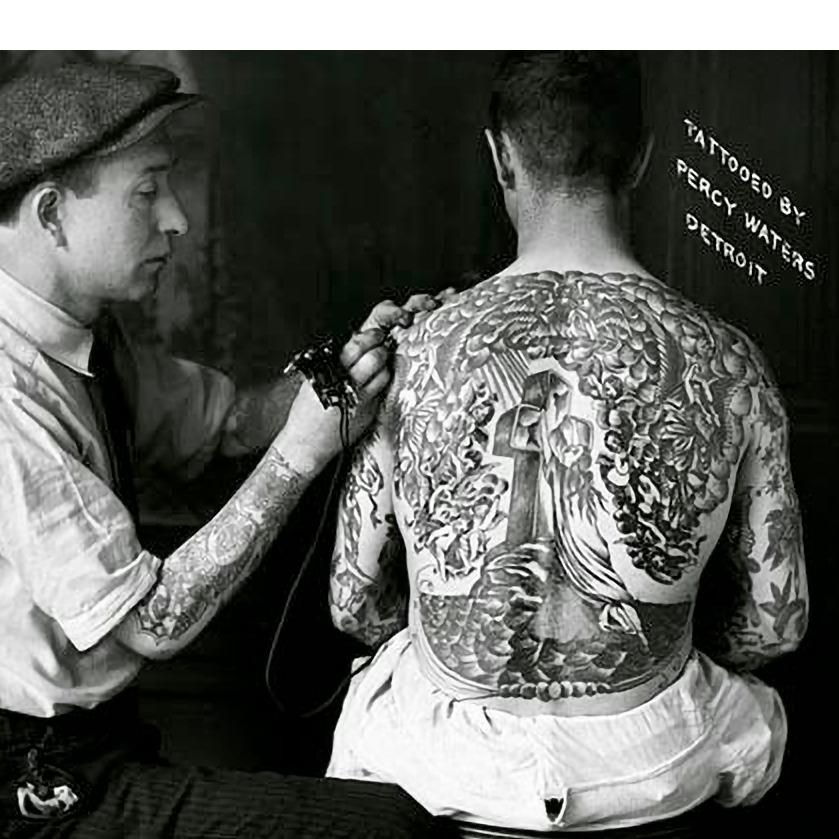
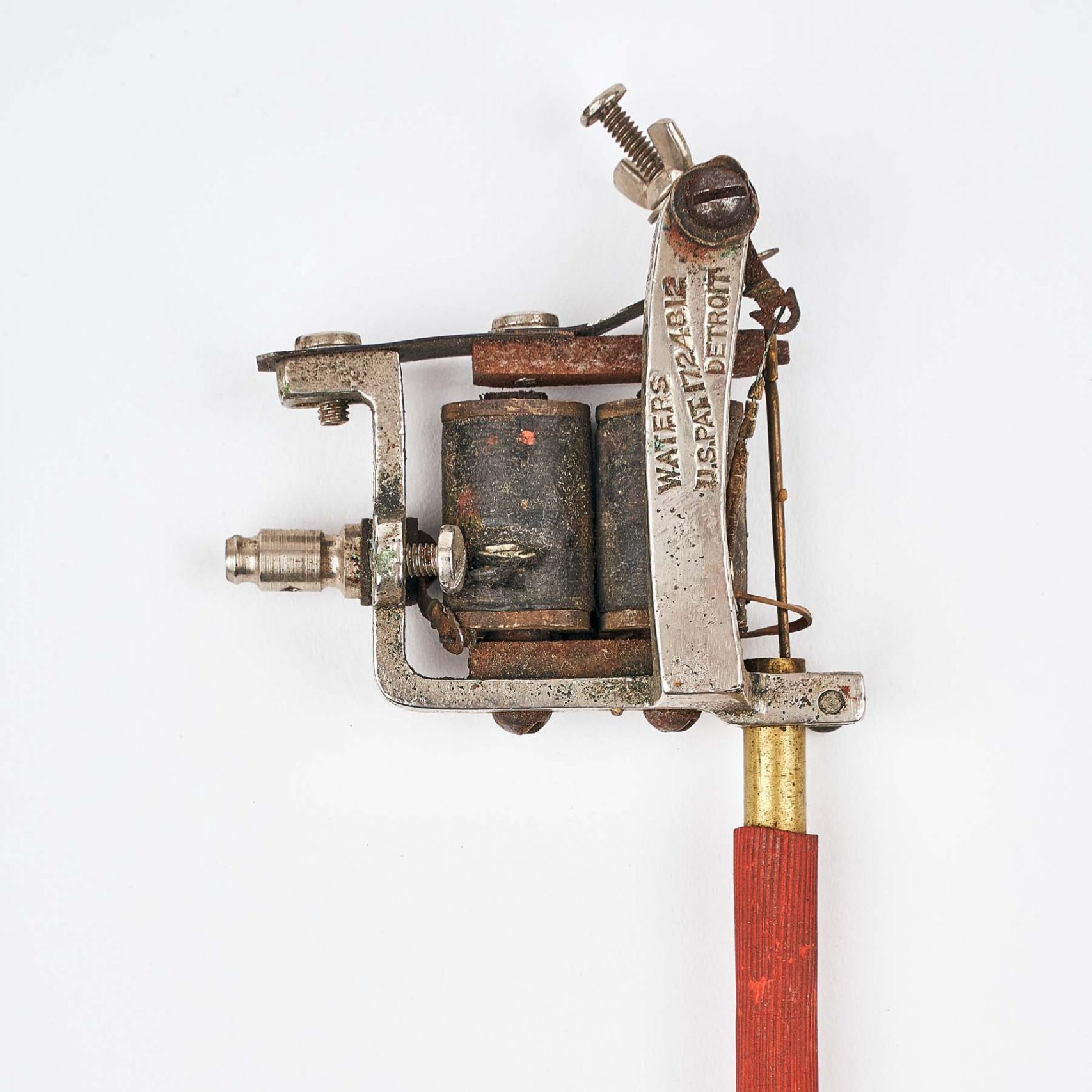
Leave a Reply